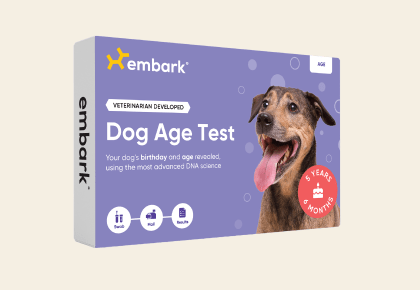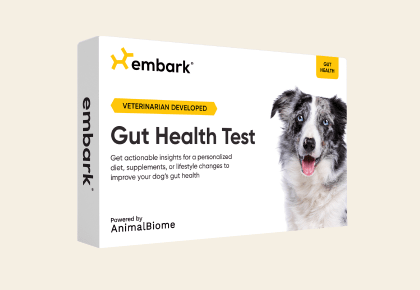Autosomal Dominant Progressive Retinal Atrophy
PRA is a retinal disease that causes progressive, non-painful vision loss. The retina contains cells, called photoreceptors, that collect information about light and send signals to the brain. There are two types of photoreceptors: rods, for night vision and movement, and cones, for day vision and color. This type of PRA causes a rapid onset of blindness.
-
Signs and symptoms
PRA is a subtle disease and dogs adapt very well to the slow loss of vision. However, with this form of PRA, high intensity light can trigger a rapid decline in vision over 2-4 weeks. You may notice that your dog is reluctant to go down the stairs, bumps into door frames or corners, or takes a longer time to fetch a toy.
Symptoms appear as early as 8 weeks of age, but often are not noticed until a dog is 2-3 years of age. -
Diagnosis
Veterinarians use a focused light to examine the pupils. In affected dogs, the pupils will appear more dilated and slower to contract. Your vet may also use a lens to visualize the retina at the back of the eye to look for changes in the optic nerve or blood vessels. You may be referred to a veterinary ophthalmologist for a definitive diagnosis.
-
Treatment
Currently, there is no definitive treatment for PRA. Supplements, including antioxidants, have been proposed for management of the disease, but have not been scientifically proven effective.
-
What to do if your dog is at risk
Actions
- By genetic testing for AD-PRA and avoiding high- intensity light situations, you may prolong your dog’s vision by months to years.
-
Genetic Information
This mutation was first described in the English Mastiff and Bullmastiff.
This mutation is inherited in an autosomal dominant manner, meaning that one or two copies of this gene will cause the disorder.
Gene names:
RHO (Exon 1) ‐ chr
Inheritance type:
dominant
Citations:
-
Breeds affected
This health condition affects the following breeds
Learn about your dog’s unique genetic health
Dog owners
Breed identification, health and trait insights, personalized care recommendations, and the world’s first canine relative finder—all in one leading dog DNA test.
Learn about the report for dog ownersShop the test
Breeding programs
Embark’s test for breeding programs is one comprehensive DNA test designed with your needs in mind.
Learn about the report for breedersShop the test












